How to Treat Powdery Mildew on Crepe Myrtle?
Powdery mildew is easier to avoid than control!
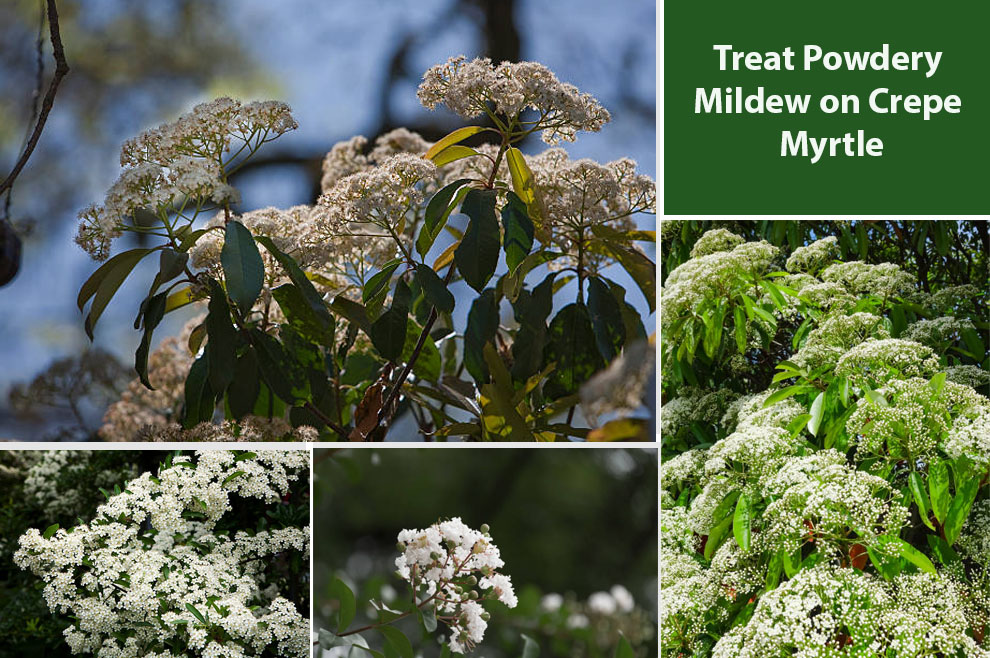
Did you recently note white spots on your crepe myrtle leaves? If yes, there is a good chance your plant is infected with powdery mildew. It is a fungus that results in white or gray fuzzy growth on your Crepe Myrtle blooms and leaves. The fungus thrives in humid and warm conditions, typically in the fall and the spring.
It is best to plant a resistant crepe myrtle variety in full sun to skip the mildew problem altogether. You can also spray the plant with a light organic fungicide as a preventive measure.
This fungal disease can damage or kill the plants if you do not know how to treat powdery mildew on crepe myrtle. Sadly, fungal diseases have a quick spread and tend to cause more significant problems in the crepe myrtle if you do not treat them immediately, sometimes even robbing the plants of the blooms.
Today we will discuss everything you need to know about powdery mildew, its prevention, identification, and treatment.
But, first things first. Let’s understand what it is and then quickly hop on to the solutions you have to tackle the problem.
What Is Powdery Mildew and Does It Ever Go Away?
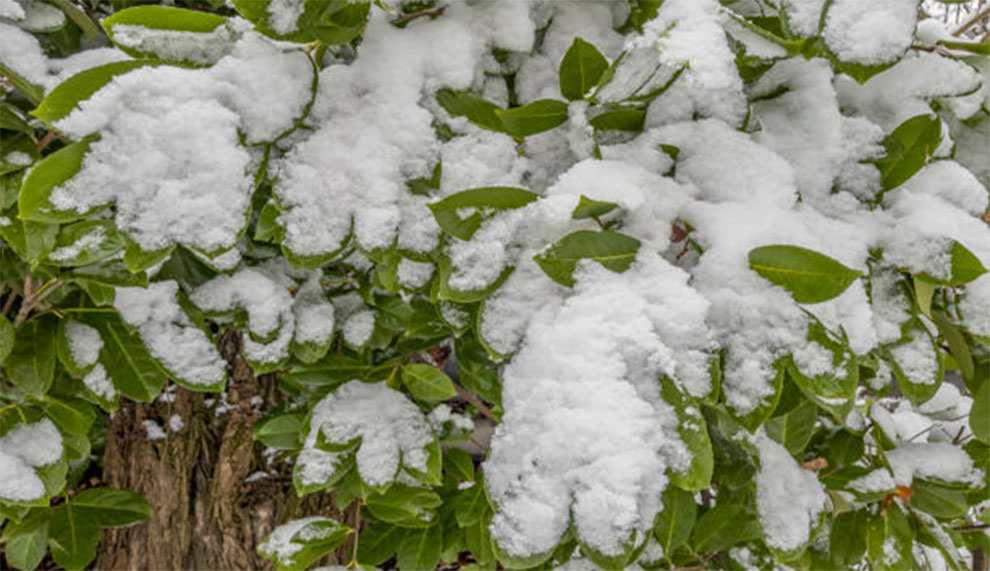
Powdery mildew is a prevalent problem affecting almost all kinds of shrubs, trees, and plants, and crepe myrtles are no exception. Fortunately, it is a curable fungal condition caused by the fungus Erysiphe Lagerstroemia. So, yes, most powdery mildew infections are treatable and go away entirely in three to four weeks.
If you know the correct treatment, you can save the plant. In powdery mildew, the fungus grows on the tree’s flowers, buds, shoots, and leaves with a powder-like appearance, thus justifying its name, ‘powdery mildew.’ Apart from prevention, you can spray them with horticulture or neem oil, and other fungicides to save your plant.
Typically, you can identify it by its appearance and see it in the form of spots that tend to merge and develop large patches of powdery mildew, causing spores transported by the wind to other plants. It triggers the development of thin layers or patches of grayish or white powdery mildew.
Best Treatment For Powdery Mildew On Crape Myrtle
Powdery mildew is a treatable and preventable condition. So, the first step towards it is preventing the infection altogether. You must be cautious at the plantation stage for this and plant the crepe myrtle in full sun. In addition, removing the suckers is also imperative for prevention.
At times, regardless of how much you try, powdery mildew develops. Hence, treatment is necessary. You can opt for synthetic fungicide or a home remedy for powdery mildew on crepe myrtles. At times, a combination of the two can also be beneficial.
Below, we will discuss in detail all the treatment and prevention measures for crepe myrtle. Let us address them one by one:
a) Treatment for powdery mildew
1. Fungicides
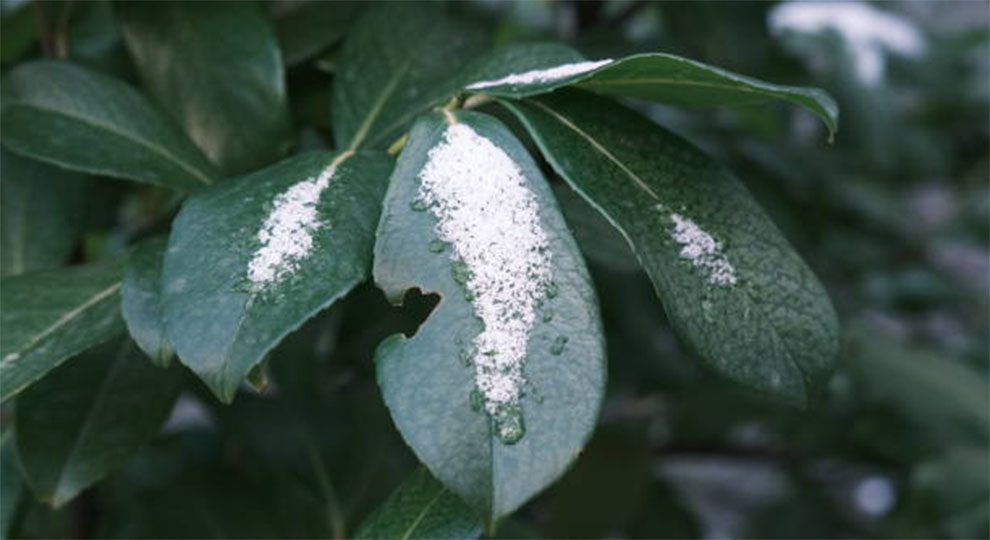
Since a susceptible host and high humidity are the two main prerequisites for the powdery mildew to thrive, there may be many situations wherein you will require fungicide for crepe myrtle powdery mildew treatment. Typically, you must apply the fungicide the moment the mildew infection commences, and if you see the spread increasing, you must accordingly increase your fungicide application frequency.
Usually, experts recommend an application every one to two weeks intervals. With the impact of powdery mildew declining, you can also lower the fungicide application. When looking for suitable fungicides, you must read the labels and pick those dedicated for use for crepe myrtles. Hence, before shopping for the fungicide, assess the label for the active ingredients like sulfur, propiconazole, tebuconazole, and potassium bicarbonate.
A. Organic Alternatives
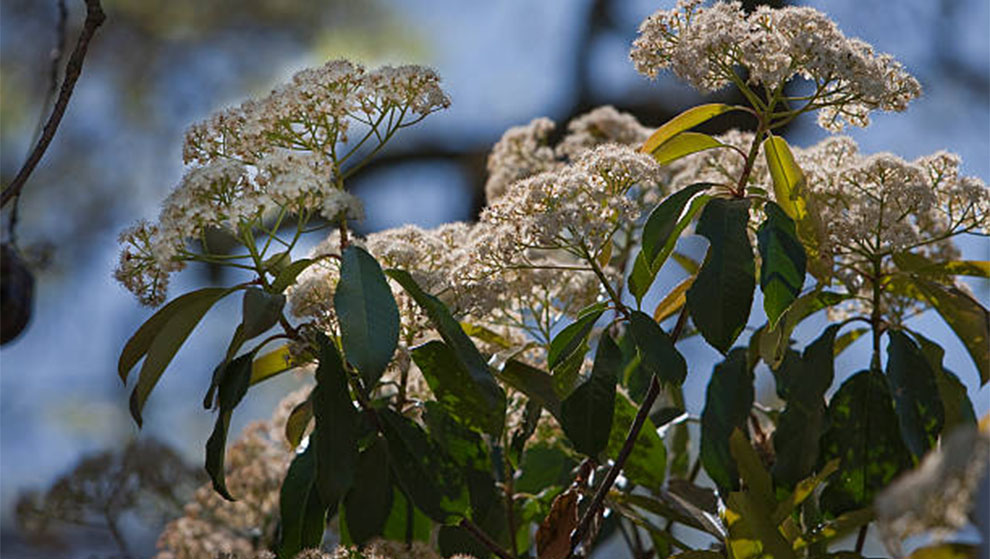
When you wish to expose your plant to organic options, the best fungicide for powdery mildew on crape myrtle will be those with Bordeaux mix, neem oil extract, or sulfur. Neem oil, jojoba oil, potassium bicarbonate, sulfur, and horticultural oil help treat powdery mildew. In addition, they also take away the need for chemical uses in the landscape. However, it is essential to use them correctly.
One of the best things about the natural alternatives is that they do not harm beneficial insects or pollinators. However, you must not apply them if you reside in temperatures above ninety degrees or when the Crepe Myrtle is water stressed.
When choosing to treat with sulfur sprays, do not apply oil treatment immediately. There should be at least two weeks gap between the two. If not, the combination tends to damage the plant. One of the best products for sulfur treatment is the Safer Garden Fungicide.
DIY home remedy recipe for powdery mildew
Baking soda fungicides can be a suitable alternative. You can even make your baking soda fungicide at home. For this, follow the steps below:
Step 1 – Gather the Ingredients
- 3 tbsp of light horticultural oil
- 3 tbsp of baking soda
- 1 gallon of water
Step 2 – Mix them
Step 3 – Store in a spray bottle and use
Now, you are ready to spray the organic baking soda fungicide on your crepe myrtle.
B. Store Bought Chemical Fungicides

You can find them sold under different names by homeowners. Typically, these will have active ingredients, such as triadimefon, tebuconazole, propiconazole, myclobutanil, and triforine. You can find them sold in the market under several brand names.
So, check the label for the ingredients in the small print, and follow the usage instructions as stated. One of our top recommendations is the Bayer 3-in-1 Insect, Mite & Disease Control for mildew removal.
2. Selective pruning
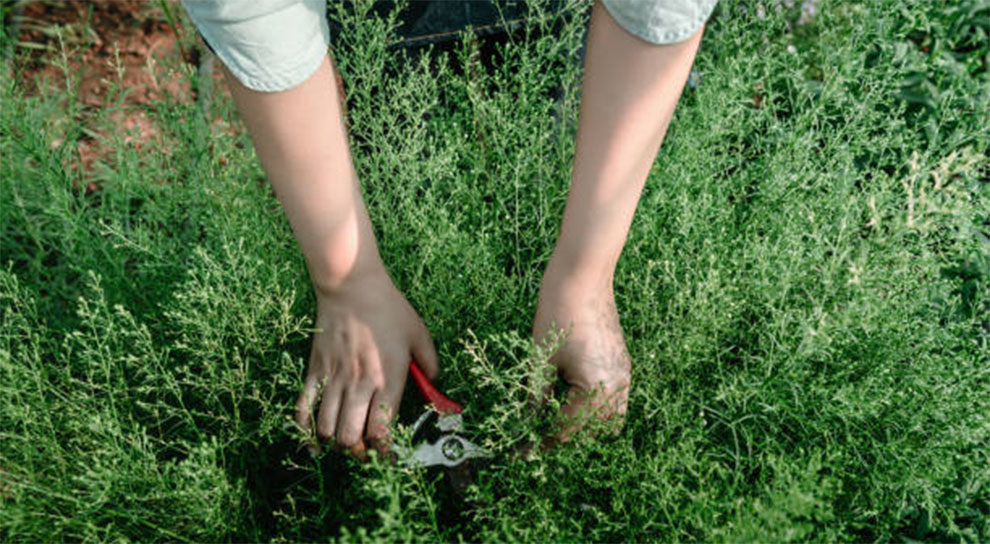
Many people do not know how to treat powdery mildew on crepe myrtle with pruning, but it is one of the quintessential practices for the overall maintenance and health of the Crepe Myrtle. Under this method, you remove the affected branches methodically, intending to open the tree’s canopy, remove any rubbing, crossed, diseased, or dead branches, and shape the tree.
On the internet, when you search whether you must prune your crepe myrtles, you will be flooded with all sorts of misinformation. So, be very well informed before you take this measure. Ideally, you should prune the crepe myrtles rarely because aggressive pruning stunts crepe myrtle’s growth. The objective must never be to control its size. If you cannot accommodate bigger crepe myrtles in your garden, opt for the smaller varieties only.
One of the most distinguishing factors about crepe mildew is that they bloom on new wood, and this new growth develops at the tips of the limbs from the last season. So, if you prune every season, Crepe Myrtle cannot grow new limbs, resulting in stunted growth and no blooms. Hence, be careful with the pruning and use it to keep the plant guarded against fungus and other diseases and not curtail the height.
3. Milk for the treatment
Take two to three parts water, mix it with one part milk, and generously spray. Even though the science behind this solution is unknown, it does work well, especially on powdery mildew. Milk has some naturally-occurring compounds that do a good job at combatting the disease and help boost a plant’s immune system.
b) Preventing Powdery Mildew on Crepe Myrtle
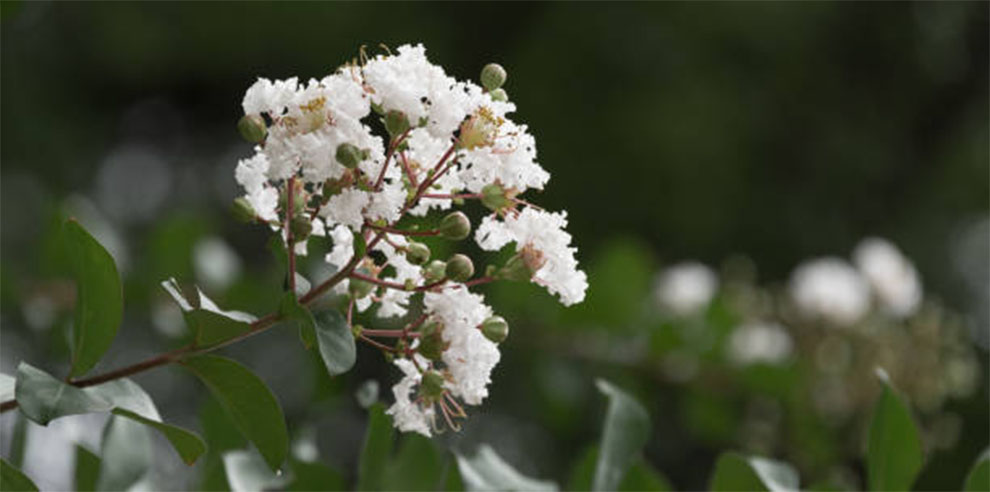
Apart from the crepe myrtle powdery mildew treatments, one of the best ways to get rid of this problem is by taking proactive measures for keeping your crepe myrtle healthy. For this, you must water your plant regularly, ensure your plant receives the necessary ventilation, and avoid overcrowding.
Together these three steps come in handy in lowering the plant’s susceptibility to fungal infection, including powdery mildew. Beyond this, there are a few other measures to prevent mildew growth. Below, we will explain them in detail:
1. Proper air circulation
Necessary ventilation is also imperative to prevent powdery mildew growth. Good airflow helps keep the plant’s leaves dry, making it challenging for the mildew to catch hold.
2. Watering
You must water your plants regularly and early in the day to ensure the leaves get time to dry before nightfall. It is quintessential because powdery mildew mainly thrives during the night hours. So, you do not want to leave your plants wet for long periods.
3. Overcrowding
One of the prime reasons for the powdery mildew development is overcrowding. Naturally, when you plant two plants together, they tend to compete for resources. It becomes a conducive environment for fungal growth. Hence, if you wish to avoid mildew development, you must give your plants ample space to grow.
4. Give it ample sunlight.
The fungus develops on crepe myrtles in damp conditions. So, when the plant receives ample sunlight, the moisture and dampness from the roots will be absorbed, thus preventing mildew growth.
5. Go easy with the fertilizer.
If you do not have sandy soil, your crepe myrtles do not need heavy fertilization. People tend to overfeed the plants with the hope of producing lush new development, but powdery mildew grows the most on the new growth. So, do not overdo the fertilizer.
6. Plant mildew-resistant cultivators
Some cultivators are resistant to powdery mildew. So, if you are planning to include some new trees into your landscape or replace any existing tree, here are some of the best powdery-mildew-resistant cultivators you can opt for:
- Sioux
- Cherokee
- Muskogee
- Catawba
- Tonto
- Acoma
- Hopi
- Tuskegee
When To Seek Professional Help?
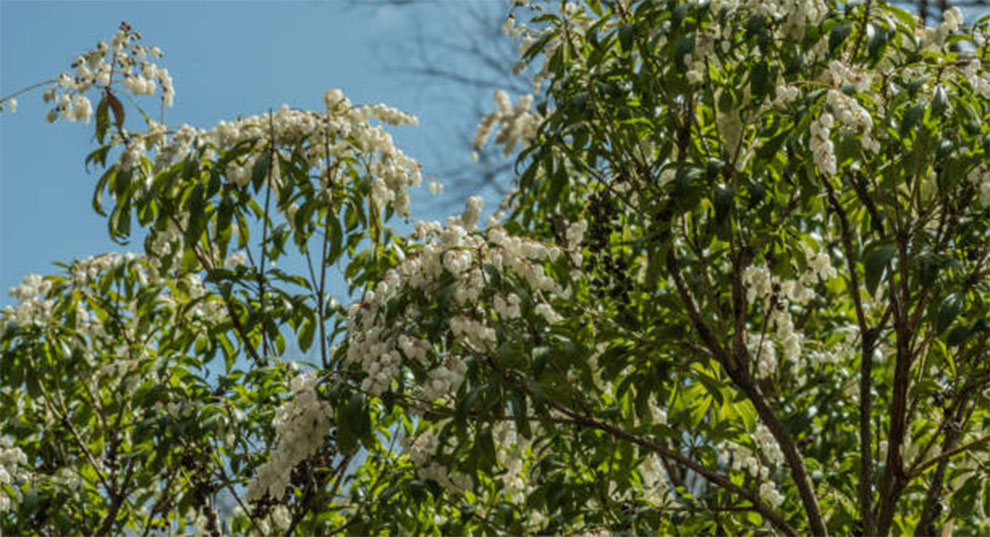
Powdery mildew is a prevalent fungal issue in crepe myrtles. However, with the right treatment option, you can control it. If you do not know how to treat powdery mildew on crepe myrtle, it is best to get professional help.
The plant infection may be spreading rapidly or simply you do not know what it is. In any case, you can have a professional inspect your plant to help you with the correct process. A professional can guide you with the most suitable treatment options and prevention measures to avoid a future outbreak.
What Causes Mildew on A Crepe Myrtle?
Powdery mildew comprises several microscopic spores that travel via land and wind on new plant hosts. When conditions are favorable, it germinates and infects the plants. Sadly, the problem is that the environment mildew needs to thrive is very well found on crepe myrtle leaves. Thus, justifying their frequent occurrence on the crepe myrtle.
This fungus develops and grows in warm weather with some shade, but it is sensitive to direct sunlight and temperatures above ninety-five degrees. When conditions are humid and damp, powdery mildew spreads rapidly. Thus, improperly pruned, overcrowded, or crepe myrtles with poor air circulation are at the maximum risk of getting infected by this fungus.
If Unsure, How Can You Identify Powdery Mildew On Crepe Myrtle?
If you are uncertain whether your crepe myrtle has powdery mildew, you can confirm your susception with a quick assessment. Here are the steps to follow:
- Carefully look at the infected foliage. Do you see grayish or white spots on the leaves?
- Do these spots merge in a few days to develop larger patches?
If yes, it is pretty likely that you have white powdery mildew on crepe myrtles.
Related Reads: Crepe Myrtle Care | Crepe Myrtle Lifespan | Crepe Myrtle Dormancy
Frequently Asked Questions
Ques 1. What kills powdery mildew instantly?
Ans. A contact fungicide, potassium bicarbonate, can kill the powdery mildew quickly.
Ques 2. Will Epsom salt get rid of powdery mildew?
Ans. Yes, Epsom salt can help eliminate powdery mildew, provided you mix it with sodium bicarbonate or baking soda.
Summing Up…
Like every other disease to humans and plants, there cannot be a better rescue than prevention. Powdery mildew enjoys warm, shaded conditions with improper ventilation. So, plant your tree in the right spot wherein it gets ample sunlight. Further, expose it to morning sprinkling, monitored fertilization, and good ventilation to keep powdery mildew at bay.
